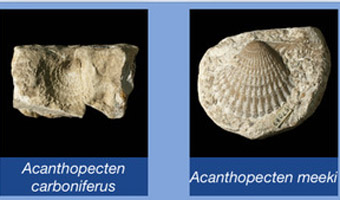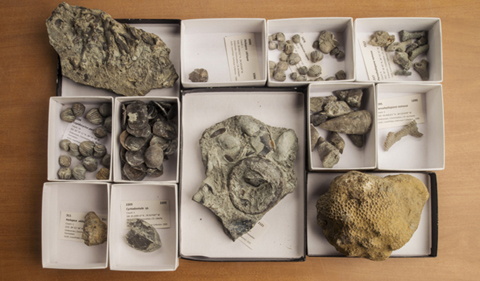More than a dozen Ohio University geology students helped develop a new app that helps people identify fossils.
The a free iOS app—for both iPad and iPhone—is called the “Digital Atlas of Ancient Life.”
Check out the app or find it in the Apple app store.
“This exciting new digital product was developed as part of my NSF grant with the University of Kansas to enhance the outreach component of the project,” says Dr. Alycia Stigall, Professor of Geological Sciences. Stigall and members of the team will present “Digital Fossils: There’s an App for That” at the Geological Society of America annual meeting on Nov. 3 in Baltimore.
Students involved in the project include: three M.S. in Geological Sciences students: Hannah-Maria Brame ’13MS, Adriane Lam ’15MS, and Jennifer Bauer ’14MS. And lots of undergraduate Geological Sciences B.S. student researchers: Jeff Shaffer (B.S. in progress), Salvadore Dumas (B.S. in progress), Ethan Slagel (B.S. in progress), Elizabeth Schoepnner (in progress), Mackenzie Glasgow ’15BS, Tim Henderson ’15BS, Zoe Zezsut ’15BS, Wesley Parker ’15BS, Tyler Payne ’15BS, Robert Ahuja ’15BS (in communication studies), Daniel Hermanns ’15BS 15, Cody Contner ’13BS, Diane Estes ’13BS.
The Digital Atlas of Ancient Life app is a tool for exploring and identifying marine fossils from three different regions and time periods:
- The Pennsylvanian Period of the North American Midcontinent—This includes the rocks that occur right here in Athens. They are 300-323 million years old.
- The Ordovician Period of the Cincinnati Region—This includes the rocks Stigall has been studying in the Ohio-Kentucky-Indiana area for the past decade. They are 443-453 million years old.
- The Neogene Period of the Gulf Coastal Plain—This includes relatively young fossils (23-2 million years old) that are found in deposits from Florida to Virginia. Many of these are fossils of species still alive today.
“My collaborators and I expect this to be a valuable resource for amateurs, K-16 teachers and also professionals. Anyone can choose their favorite fossil species for instance, from several different time periods, find photographs of it, and then locate places where fossils of that species were collected and access additional information like stratigraphic distributions, how to differentiate it from similar fossil species, etc.,” Stigall says.




















Comments